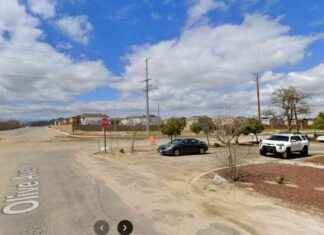The Diocese of Barcelona covered up at least three cases of clerical pedophilia during the periods of Cardinals Narcís Jubany Arnau, now deceased, and Emeritus Lluís Martínez Sistach. Half a century later the complicity in the Vendrell case is revealed. And the assumption of this case is proof of the willingness of the current bishop of Barcelona and president of the Episcopal Conference, Juan José Omella, to investigate possible cases of pedophilia in the Spanish church. A complete contrast with the thick veil of decades ago.
Regarding the Vendrell case, complaints from 20 men from Caldes d’Estrac accusing the priest Josep Vendrell Cortasa of sexual abuse when they were minors have appeared in various media. The facts date back to the years 1970-1975, when the priest was parish priest of that town.
The archbishopric of Barcelona, ??in response to information from El País, issued a statement last week acknowledging that in its files there was a complaint from a father in 1975 and that the event was not investigated. A deferred confession. The note reveals that a father recommended to the archdiocese “to transfer the priest where there was no child.” However, Vendrell became the parish priest of Montcada i Reixach and later of the Barcelona parishes of San Domingo de Guzmán and San Ignacio de Loyola until his death in 2004. According to statements to Catalunya Radio by the judicial vicar Santiago Bueno, the lack of investigation must considered “a shame”. In 1975 Narcís Jubany was cardinal-archbishop of Barcelona and Lluís Martínez Sistach held the position of deputy judicial vicar, where complaints were filed. Subsequently, Sistach was vicar general of the diocese in 1979 and auxiliary bishop in 1987.
This scandal is linked to two others, which implicate the same protagonists as alleged concealers. The case of the priest Jordi Ignasi Senabre Bernedo is presented, accused in 1988 of abusing a 13-year-old altar boy, when he was parish priest of the town of Polinyà. He was arrested by the Civil Guard, before being released with charges. The criminal process went ahead and the Public Prosecutor’s Office, in its conclusions brief, requested a sentence of five years in prison. The archbishopric of Barcelona took over the priest’s defense expenses, even depositing a deposit of five million pesetas. However, Senabre never came to appear in court. The diocese of Barcelona reported that the priest had fled and did not know his whereabouts.
More than 30 years later, it was learned that he was in the diocese of Santo Domingo de los Colorados in Ecuador, where his bishop, the German Emilio Stehle, had helped him escape in 1990. The information was obtained by German magistrate Antje Niewisch- Lennartz, who investigated Ecuador’s secret refuge for pedophile priests. This incardination in Ecuador is almost impossible without the collaboration of the Barcelona curia. A priest is not transferred to another diocese, since he could not have his papers in order in Ecuador, without the participation of the diocese of origin. Cardinal Jubany was at that time the bishop of Barcelona and Lluís Martínez Sistach his auxiliary bishop since 1987. Senabre was not brought to trial. Neither criminal, nor canonically.
And the third scandal, even more lurid, is that of the Casa de Santiago, a seminary for late vocations, created in the late 1970s, headed by Cardinal Jubany appointed priest Alfredo Rubio de Casterlenas as rector. Related to this seminar was a secular female order, called Claraeulalies, which also depended on the House of Santiago. Priests, deacons and seminarians lived in the so-called “casitas”, independent residences. The first complaint was raised as a result of the pregnancies of several girls in the order. Although the biggest commotion occurred as a result of an association called Nous Camins directed by the priest-former of the House, Francisco Andreo García (now deceased), who acted together with a series of deacons, including Albert Salvans Giralt. and Pere Cane Gombau.
The most relevant case occurred in the parish of Saint Pius X where three girls between the ages of 14 and 17, who were in Deacon Salvans’ group, denounced him for forcing them to have sexual relations. The families of the minors denounced the events before the parish priest, Carles Soler Perdigó (later auxiliary of Barcelona and bishop of Gerona) and before Cardinal Jubany. However, the two allegedly pressured the victims not to go to ordinary justice. The complaint also affected deacon Pere Cané Gombau, since they attended trips and excursions with the group.
When the facts became known, Cardinal Jubany promised the families that the deacons Salvans and Cané had been reduced to the lay state. But it was not like that: Albert Salvans went to the diocese of Westminster and Pere Cané to that of Milwaukee. Later, both were ordained priests. They went completely unpunished. Year 1988: Jubany was archbishop of Barcelona and Martínez Sistach his auxiliary bishop. Who signed the resignation that authorized the change of diocese? As Monsignor Jaume González-Agàpito, who was the diocesan prosecutor in charge of the matter, published on his Grup Aribau blog, Cardinal Jubany personally told him that he had not authorized the transfer. If he did not go, the former prosecutor considers that it could only have been signed by his auxiliary bishop, Lluís Martínez Sistach, later cardinal of Barcelona.
Vendrell, Senabre and Casa Santiago, three embarrassments covered up by Cardinal Jubany (mainly responsible) and by the deputy judicial vicar (and later auxiliary bishop) Lluís Martínez Sistach. Jubany was Auxiliary Bishop of Barcelona in 1955, Bishop of Girona from 1964 to 1971, and Archbishop of Barcelona until 1990, dying in 1996. Sistach, after being Auxiliary Bishop of Barcelona, ??went to Tortosa in 1991, Tarragona in 1997, and Barcelona in 2004 until Omella replaced him in 2015. Without his participation, Senabre would probably have been tried, the deacons of La Casa de Santiago would not have been ordained priests, and the priest Vendrell would have been investigated and not removed to another parish.
According to the criteria of The Trust Project






